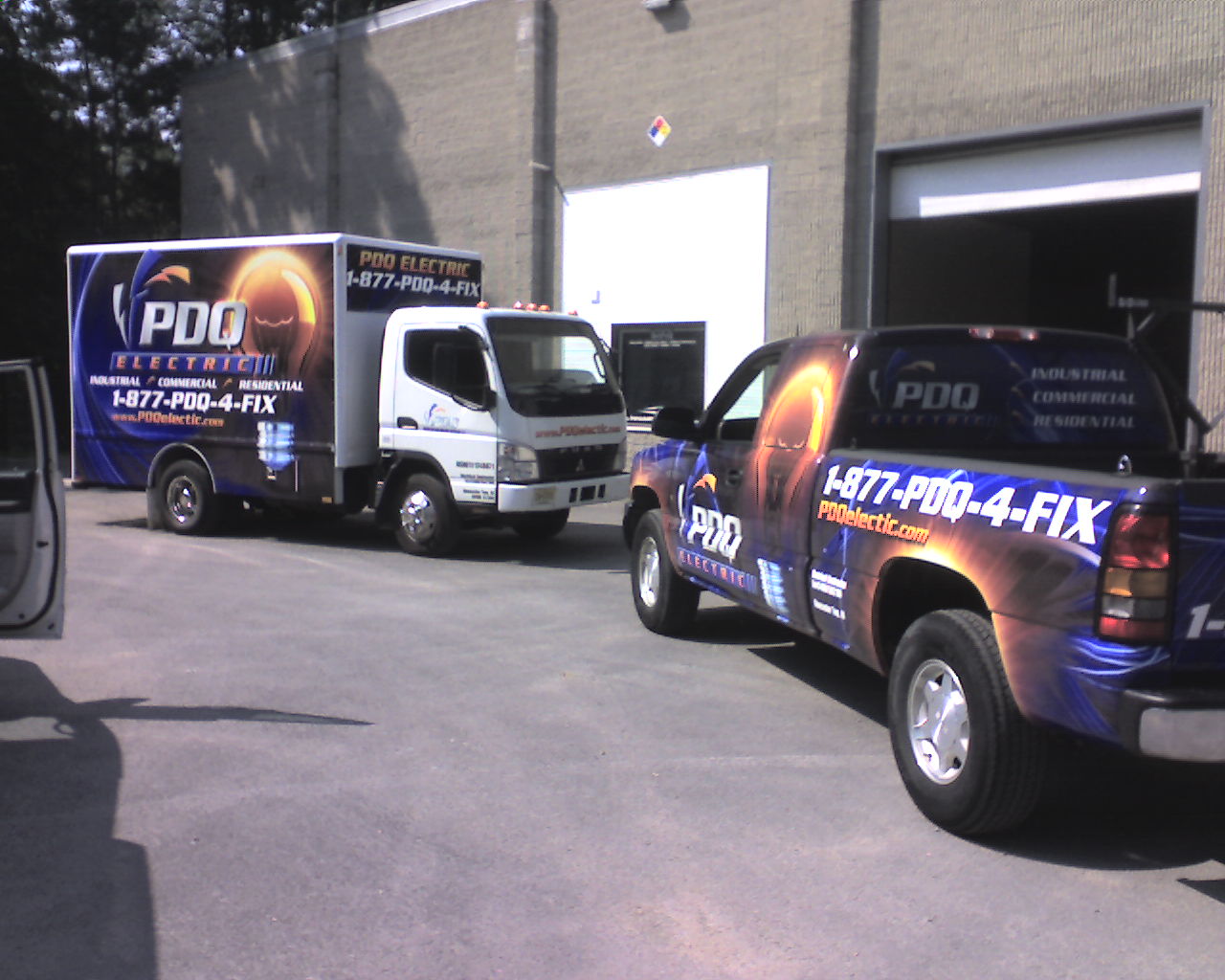 Industrial - Commercial
Industrial - Commercial  Electrical
Contractor
Electrical
Contractor 
PDQ Electric Corp
NJ, PA, DE, MD, NY, CT, DC, MA, RI
|

PDQIE - PDQ Industrial Electric
Burglar (or intrusion), fire, and safety alarms are electronic alarms designed to alert the user to a specific danger. Sensors are connected to a control unit via low-voltage wiring or a narrowband RF signal which is used to interact with a response device. The most common security sensors are used to indicate the opening of a door or window or detect motion via passive infrared (PIR). New construction systems are predominately hardwired for economy. Retrofit installations often use wireless systems for a faster, more economical installation. Some systems serve a single purpose of burglar or fire protection. Combination systems provide both fire and intrusion protection. Systems range from small, self-contained noisemakers, to complicated, multi-zoned systems with color-coded computer monitor outputs. ALARM TYPE SENSORS INDOOR SENSORS These types of sensors are designed for indoor use. Outdoor use would not be advised due to false alarm vulnerability and weather durability PIR Passive Infrared Motion Detectoor Ultrasonic Detectors
The ultrasonic detector operates by the transmitter emitting an ultrasonic signal into the area to be
protected. The sound waves are reflected by solid objects (such as the surrounding floor, walls and ceiling)
and then detected by the receiver. Because ultrasonic waves are transmitted through air, then hard-surfaced
objects tend to reflect most of the ultrasonic energy, while soft surfaces tend to absorb most energy.
When the surfaces are stationary, the frequency of the waves detected by the receiver will be equal to the
transmitted frequency. However, a change in frequency will occur as a result of the Doppler principle, when a
person or object is moving towards or away from the detector. Such an event initiates an alarm signal. This
technology is considered obsolete by many alarm professionals, and is not actively installed.
Microwave Detectors This device emits microwaves from a transmitter and detects any reflected microwaves or reduction in beam intensity using a receiver. The transmitter and receiver are usually combined inside a single housing (monostatic) for indoor applications, and separate housings (bistatic) for outdoor applications. To reduce false alarms this type of detector is usually combined with a passive infrared detector or "Dualtec" alarm.
By generating energy in the microwave region of the electromagnetic spectrum, detector operates as an active
volumetric device that responds to:
* A Doppler shift frequency change. * A frequency phase shift. * A motion causing reduction in received energy. Photo-electric Beam Sensor Photoelectric beam systems detect the presence of an intruder by transmitting visible or infrared light beams across an area, where these beams maybe obstructed. To improve the detection surface area, the beams are often employed in stacks of two or more. However, if an intruder is aware of the technology’s presence, it can be avoided. The technology can be an effective long-range detection system, if installed in stacks of three or more where the transmitters and receivers are staggered to create a fence-like barrier. Systems are available for both internal and external applications. To prevent a clandestine attack using a secondary light source being used to hold the detector in a ‘sealed’ condition whilst an intruder passes through, most systems use and detect a modulated light source. Glass Break Detector The glass break detector may be used for internal perimeter building protection. When glass breaks it generates sound in a wide band of frequencies. These can range from infrasonic, which is below 20 hertz (Hz) and can not be heard by the human ear, through the audio band from 20 Hz to 20 kHz which humans can hear, right up to ultrasonic, which is above 20 kHz and again cannot be heard. Glass break acoustic detectors are mounted in close proximity to the glass panes and listen for sound frequencies associated with glass breaking. Seismic glass break detectors are different in that they are installed on the glass pane. When glass breaks it produces specific shock frequencies which travel through the glass and often through the window frame and the surrounding walls and ceiling. Typically, the most intense frequencies generated are between 3 and 5 kHz, depending on the type of glass and the presence of a plastic interlayer. Seismic glass break detectors “feel” these shock frequencies and in turn generate an alarm condition. Smoke, Heat, and Carbon Monoixde Detectors Most systems may also be equipped with smoke, heat, and/or carbon monoxide detectors. These are also known as 24 hour zones (which are on at all times). Smoke detectors and heat detectors protect from the risk of fire and carbon monoxide detectors protect from the risk of carbon monoxide. Weight Change Floor Detectors Stress Guages installed under Floor Coverings OUTDOOR AND PERIMETER SENSORS Vibration-Shaker Inertia Sensors These devices are mounted on barriers and are used primarily to detect an attack on the structure itself. The technology relies on an unstable mechanical configuration that forms part of the electrical circuit. When movement or vibration occurs, the unstable portion of the circuit moves and breaks the current flow, which produces an alarm. The technology of the devices varies and can be sensitive to different levels of vibration. The medium transmitting the vibration must be correctly selected for the specific sensor as they are best suited to different types of structures and configurations.
A rather new and unproven type of sensors use piezo-electric components rather than mechanical circuits, which
can be tuned to be extremely sensitive to vibration.
PROS: Very reliable sensors, low false alarm rate and middle place in the
price range.
CONS: Must be fence mounted. The rather high price deters many customers,
but its effectiveness offsets its high price. Piezo-electric sensors are a new technology with an unproven
record as opposed to the mechanical sensor which in some cases has a field record in excess of 20 years.
Passive Magnetic Field Detection This buried security system is based on the Magnetic Anomaly Detection principle of operation. The system uses an electromagnetic field generator powered by two wires running in parallel. Both wires run along the perimeter and are usually installed about 5 inches apart on top of a wall or about 12"/30 cm below ground. The wires are connected to a signal processor which analyzes any change in the magnetic field. This kind of buried security system sensor cable could be buried on the top of almost any kind of wall to provide a regular wall detection ability or be buried in the ground.
PROS: Very low false alarm rate, can be put on top of any wall, very high
chance of detecting real burglars.
CONS: Cannot be installed near high voltage lines, radars.
E-Field This proximity system can be installed on building perimeters, fences, and walls. It also has the ability to be installed free standing on dedicated poles. The system uses an electromagnetic field generator powering one wire, with another sensing wire running parallel to it. Both wires run along the perimeter and are usually installed about 800 millimetres apart. The sensing wire is connected to a signal processor that analyses: * amplitude change (mass of intruder), * rate change (movement of intruder), * preset disturbance time (time the intruder is in the pattern). These items define the characteristics of an intruder and when all three are detected simultaneously, an alarm signal is generated. The barrier can provide protection from the ground to about 4 metres of altitude. It is usually configured in zones of about 200 metre lengths depending on the number of sensor wires installed.
PROS: concealed as a buried form.
CONS: expensive, short zones which mean more electronics (more money), high
rate of false alarms as it cannot distinguish a cat from a human. In reality it does not work that well, as
extreme weather causes false alarms.
Microwave Barriers
The operation of a microwave barrier is very simple. This type of device produces an electromagnetic beam using high frequency waves that pass from the transmitter to the receiver, creating an invisible but sensitive wall of protection. When the receiver detects a difference of condition within the beam (and hence a possible intrusion), the system begins a detailed analysis of the situation. If the system considers the signal a real intrusion, it provides an alarm signal that can be treated in analog or digital form.
PROS: low cost, easy to install, invisible perimeter barrier, unknown
perimeter limits to the intruder.
CONS: extremely sensitive to weather as rain, snow and fog for example
would cause the sensors to stop working, need sterile perimeter line because trees, bushes or anything that
blocks the beam would cause false alarm or lack of detection.
Microphonic Systems Microphonic based systems vary in design but each is generally based on the detection of an intruder attempting to cut or climb over a chainwire fence. Usually the microphonic detection systems are installed as sensor cables attached to rigid chainwire fences, however some specialised versions of these systems can also be installed as buried systems underground. Depending on the version selected, it can be sensitive to different levels of noise or vibration. The system is based on coaxial or electro-magnetic sensor cable with the controller having the ability to differentiate between signals from the cable or chainwire being cut, an intruder climbing the fence, or bad weather conditions.
The systems are designed to detect and analyse incoming electronic signals received from the sensor cable, and
then to generate alarms from signals which exceed preset conditions. The systems have adjustable electronics to
permit installers to change the sensitivity of the alarm detectors to the suit specific environmental
conditions. The tuning of the system is usually accomplished during commissioning of the detection devices.
PROS: very cheap, very simple configuration, easy to install.
CONS: some systems has a high rate of false alarms because some of these
sensors might be too sensitive. Although systems using DSP (Digital Signal Processing) will largely eliminate
false alarms on some cases.
Taut Wire Fence Systems (Wire Cutting Detection) A taut wire perimeter security system is basically an independent screen of tensioned tripwires usually mounted on a fence or wall. Alternatively, the screen can be made so thick that there is no need for a supporting chainwire fence. These systems are designed to detect any physical attempt to penetrate the barrier. Taut wire systems can operate with a variety of switches or detectors that sense movement at each end of the tensioned wires. These switches or detectors can be a simple mechanical contact, static force transducer or an electronic strain gauge. Unwanted alarms caused by animals and birds can be avoided by adjusting the sensors to ignore objects that exert small amounts of pressure on the wires. This type of system is vulnerable to intruders digging under the fence. A concrete footing directly below the fence is installed to prevent this type of attack.
PROS: low rate of false alarms, very reliable sensors and high rate of
detection.
CONS: very expensive, complicated to install and old technology.
Fiber Optic Cable A fibre-optic cable can be used to detect intruders by measuring the difference in the amount of light sent through the fibre core. If the cable is disturbed, light will ‘leak’ out and the receiver unit will detect a difference in the amount of light received. The cable can be attached directly to a chainwire fence or bonded into a barbed steel tape that is used to protect the tops of walls and fences. This type of barbed tape provides a good physical deterrent as well as giving an immediate alarm if the tape is cut or severely distorted. Other types work on the detection of change in polarization which is caused by fiber position change.
PROS: very similar to the Microphonic system, very simple configuration,
easy to install.
CONS: high rate of false alarm or no alarms at all for systems using light
that leaks out of the optical fiber. The polarization changing system is much more sensitive but false alarms
depend on the alarm processing.
H-Field
This system employs an electro-magnetic field disturbance principle based on two unshielded (or ‘leaky’) coaxial cables buried about 10–15 cm deep and located at about 1 metre apart. The transmitter emits continuous Radio Frequency (RF) energy along one cable and the energy is received by the other cable. When the change in field strength weakens due to the presence of an object and reaches a pre-set lower threshold, an alarm condition is generated. The system is unobtrusive when it has been installed correctly, however care must be taken to ensure the surrounding soil offers good drainage in order to reduce nuisance alarms.
PROS: concealed as a buried form.
CONS: can be affected by RF noise, high rate of false alarms, hard to
install.
Video Verification
Video verification documents a change in local conditions by using cameras to
record video signals or image snapshots. The source images can be sent over a communication link, usually an
Internet protocol (IP) network, to the central station where monitors retrieve the images through proprietary
software. The information is then relayed to law-enforcement and recorded to an event file, which can later be
used as prosecution evidence.
An example of how this system works is when a passive infrared or other sensor is triggered a designated number
of video frames from before and after the event is sent to the central station.
A second video solution can be incorporated into to a standard panel, which sends the central station an alarm.
When a signal is received, a trained monitoring professional accesses the on-site digital video recorder (DVR)
through an IP link to determine the cause of the activation. For this type of system, the camera input to the
DVR reflects the alarm panel’s zones and partitioning, which allows personnel to look for an alarm source in
multiple areas.
Call PDQIE to Discuss Your Security Systems (877)
PDQ-4-FIX
| |||||||||||||||||||||||||||||||||||||||||||||||||
(877) 737-4349 (Toll Free)
(877) PDQ-4-FIX (Toll
Free)
(856) 625-6969 (Text
Messaging)
PDQ ia an Acronym for "Pretty Damn Quick"
|
PDQIE, www.PDQIE.com, info@PDQIE.com, quote@PDQIE.com, Ryan@PDQIE.com, PDQ Industrial Electric, www.PDQIndustrialElectric.com, info@PDQIndustrialElectric.com, quote@PDQIndustrialElectric.com, Ryan@PDQIndustrialElectric.com are marketing tools of PDQ Electric Corp, a NJ Licensed Electrical Contractor. Reddy Kilowatt® is a Registered Trademark of Northern States Power Company. The information on this website is believed to be reliable, but we cannot guarantee that information will be accurate, complete and current at all times and should be reaffirmed by a licensed professional before relying on it. PDQIE will from time to time revise information, products and services described in-on this Website, and reserves the right to make such changes without notice. Use of this Website is entirely at your risk. Materials and information in this Website (including text, graphics, and functionality) are presented without express or implied warranties of any kind and are provided "as is". It is your responsibility to evaluate the accuracy, completeness and usefulness of any opinions, advice, services and information provided.